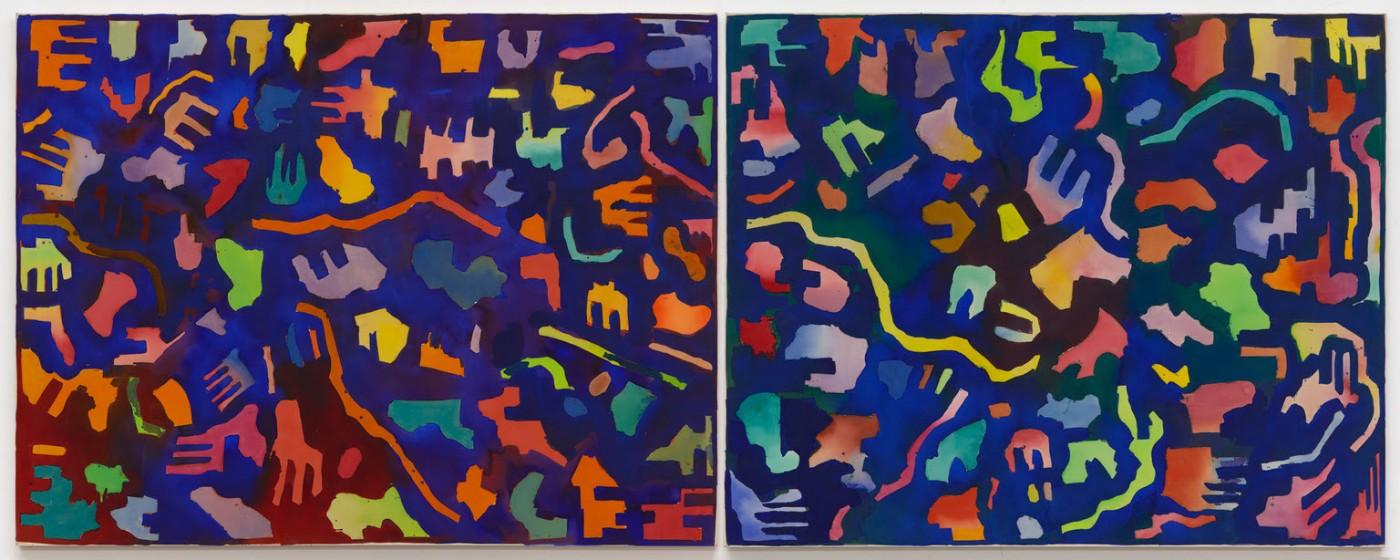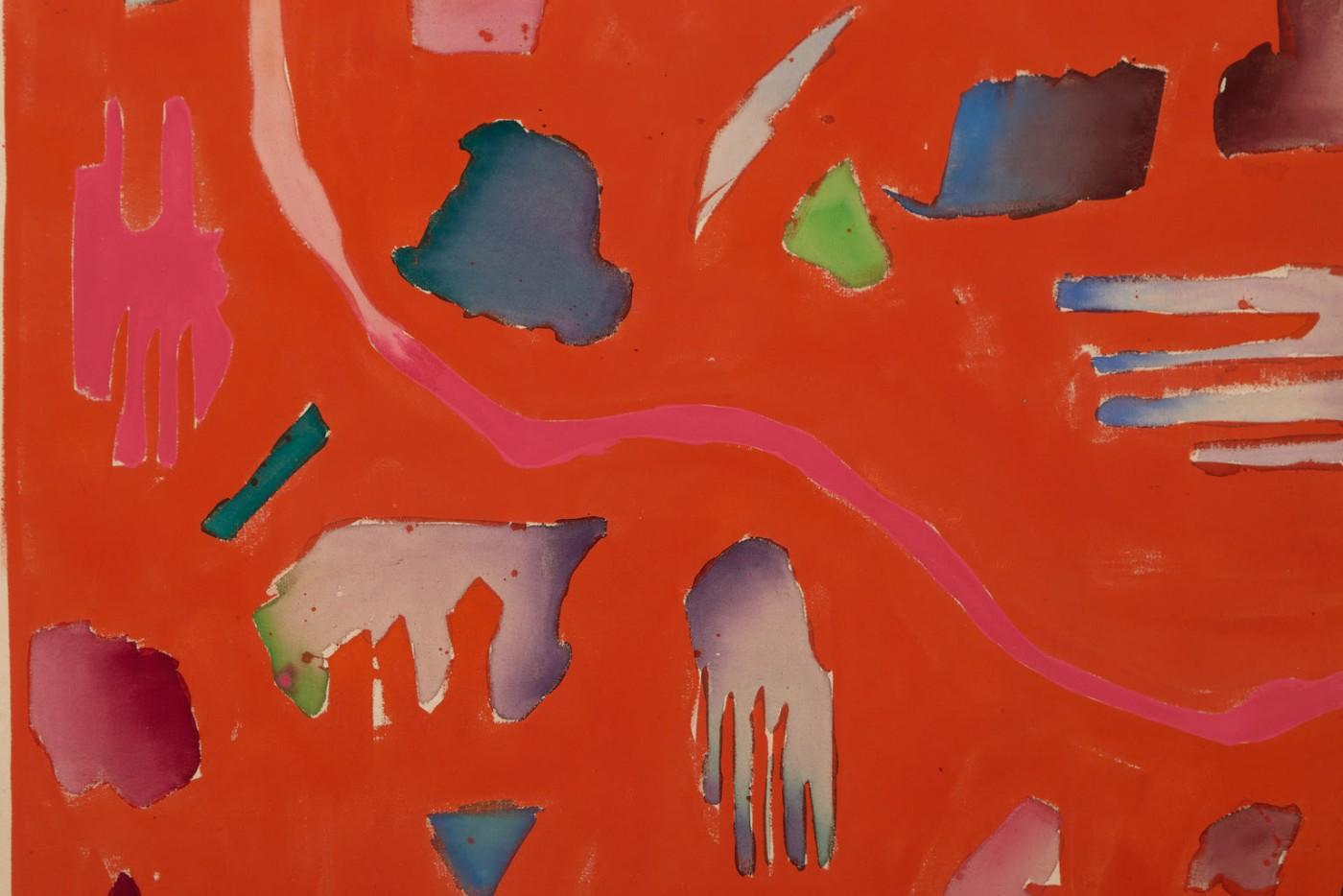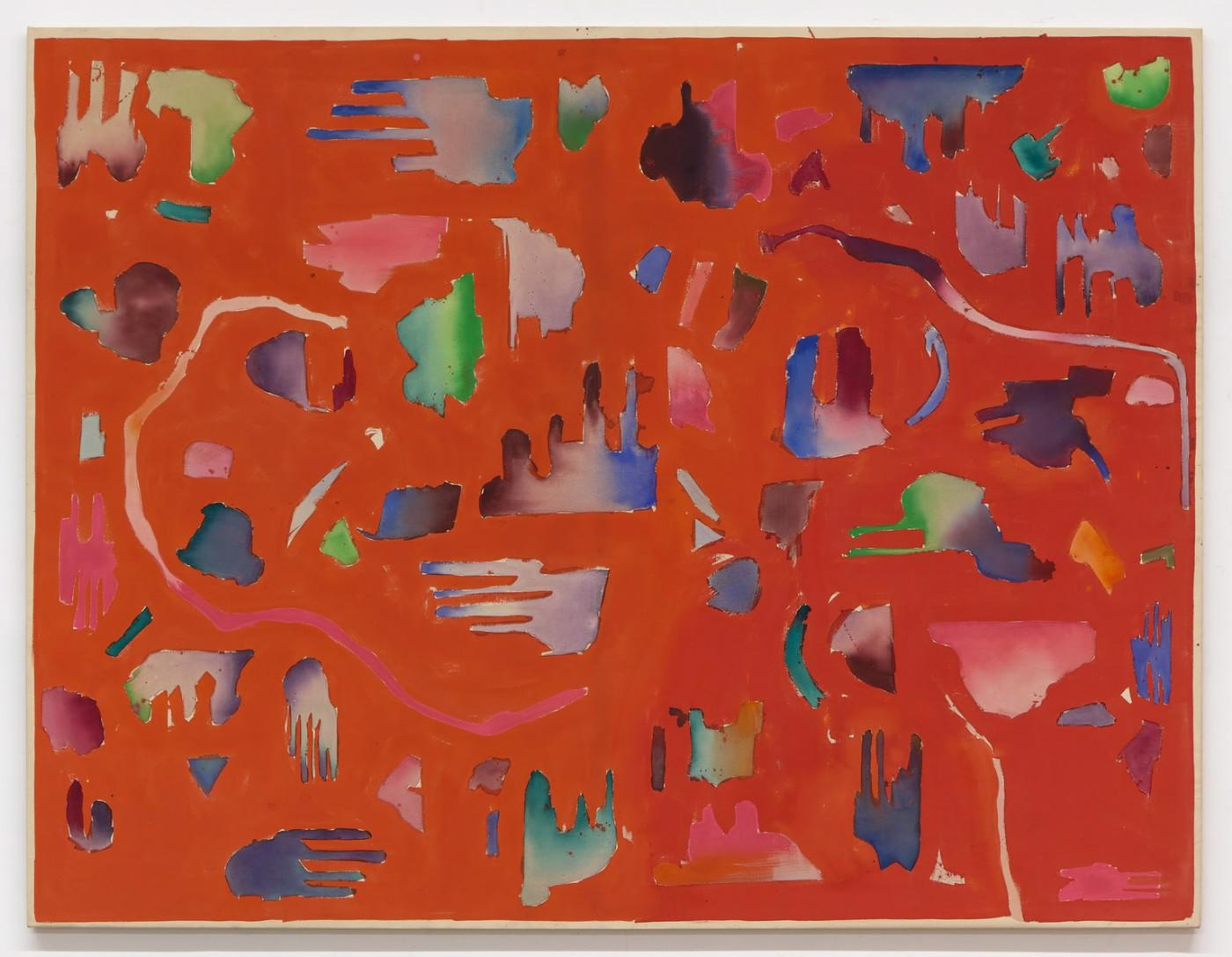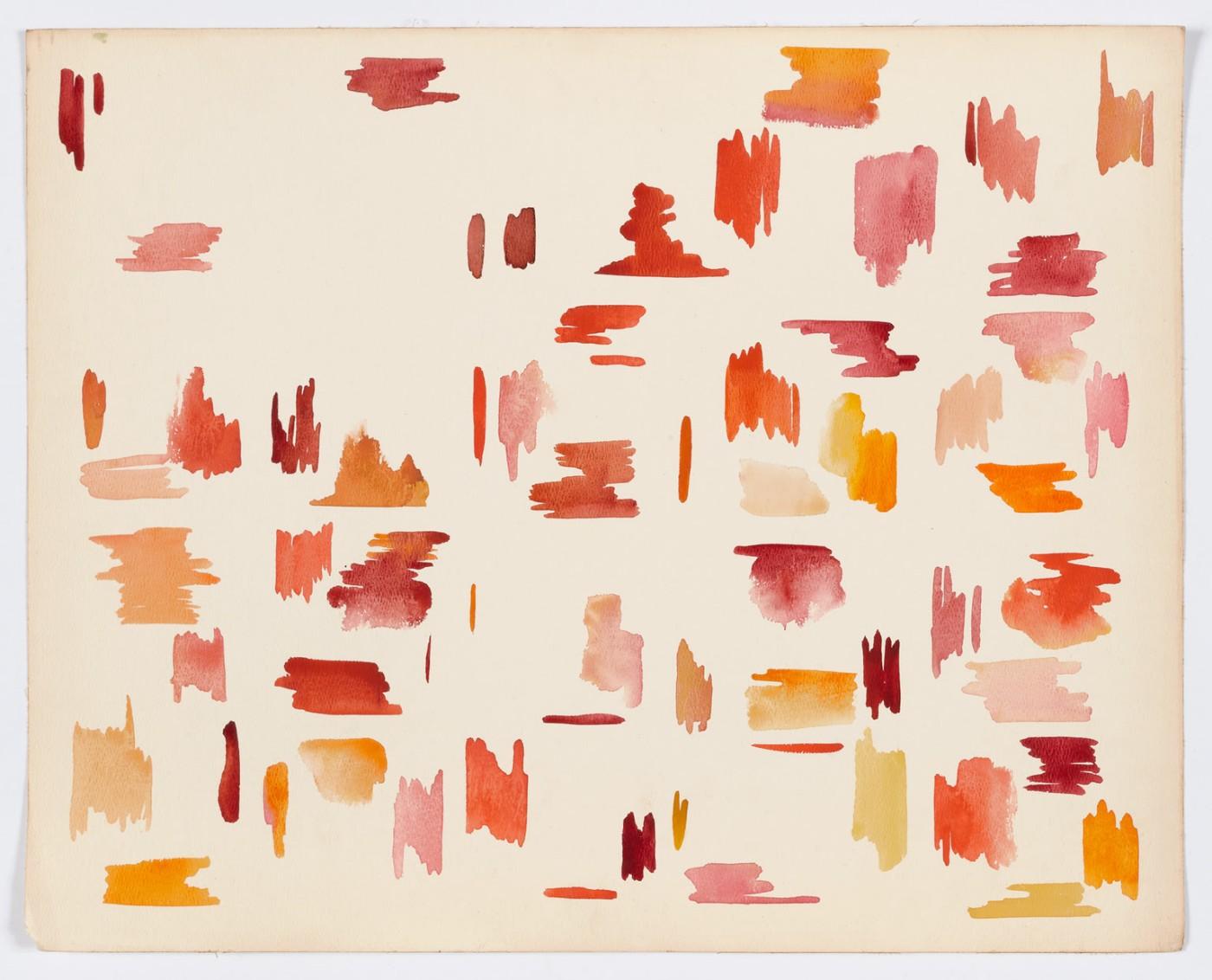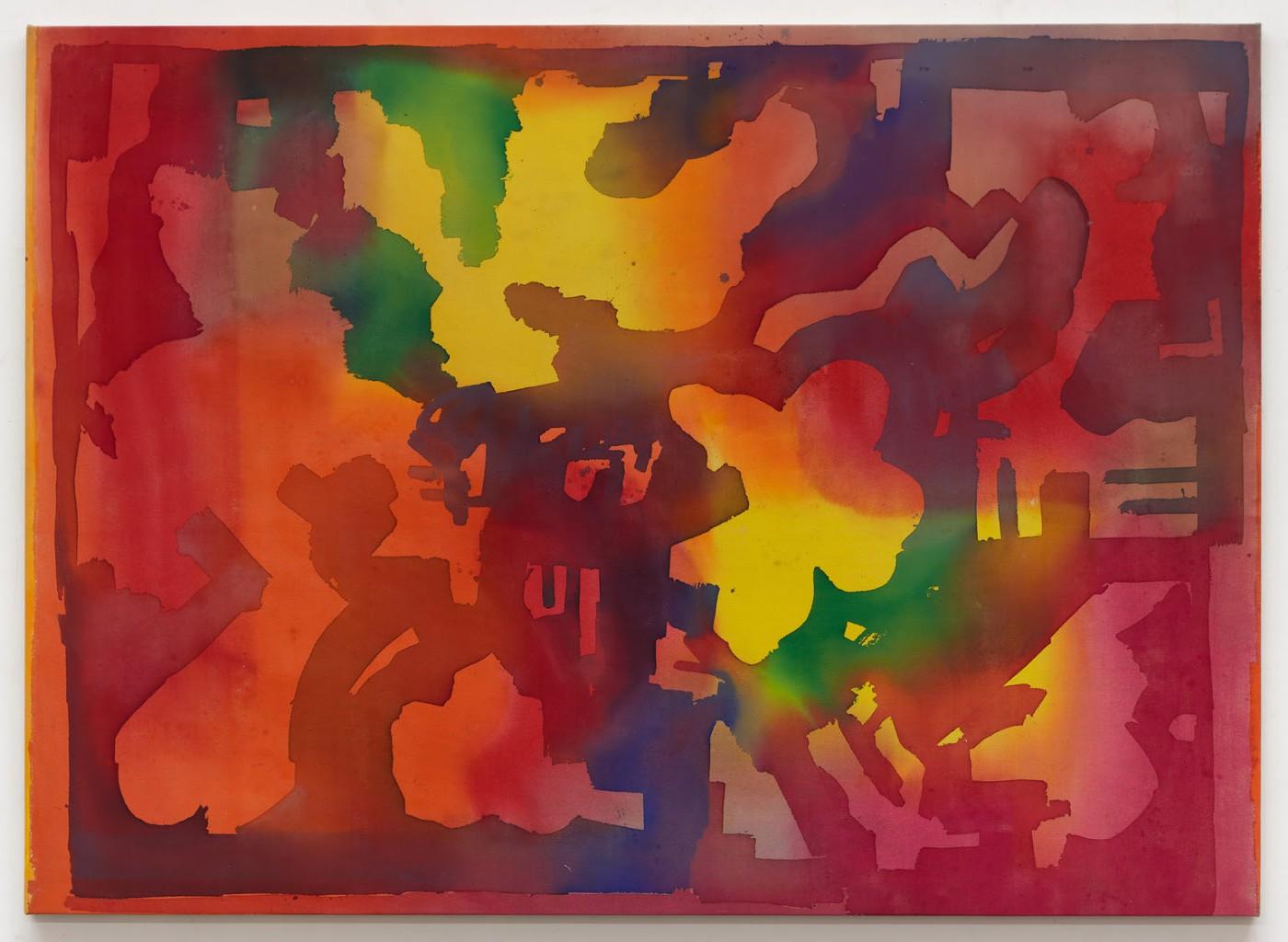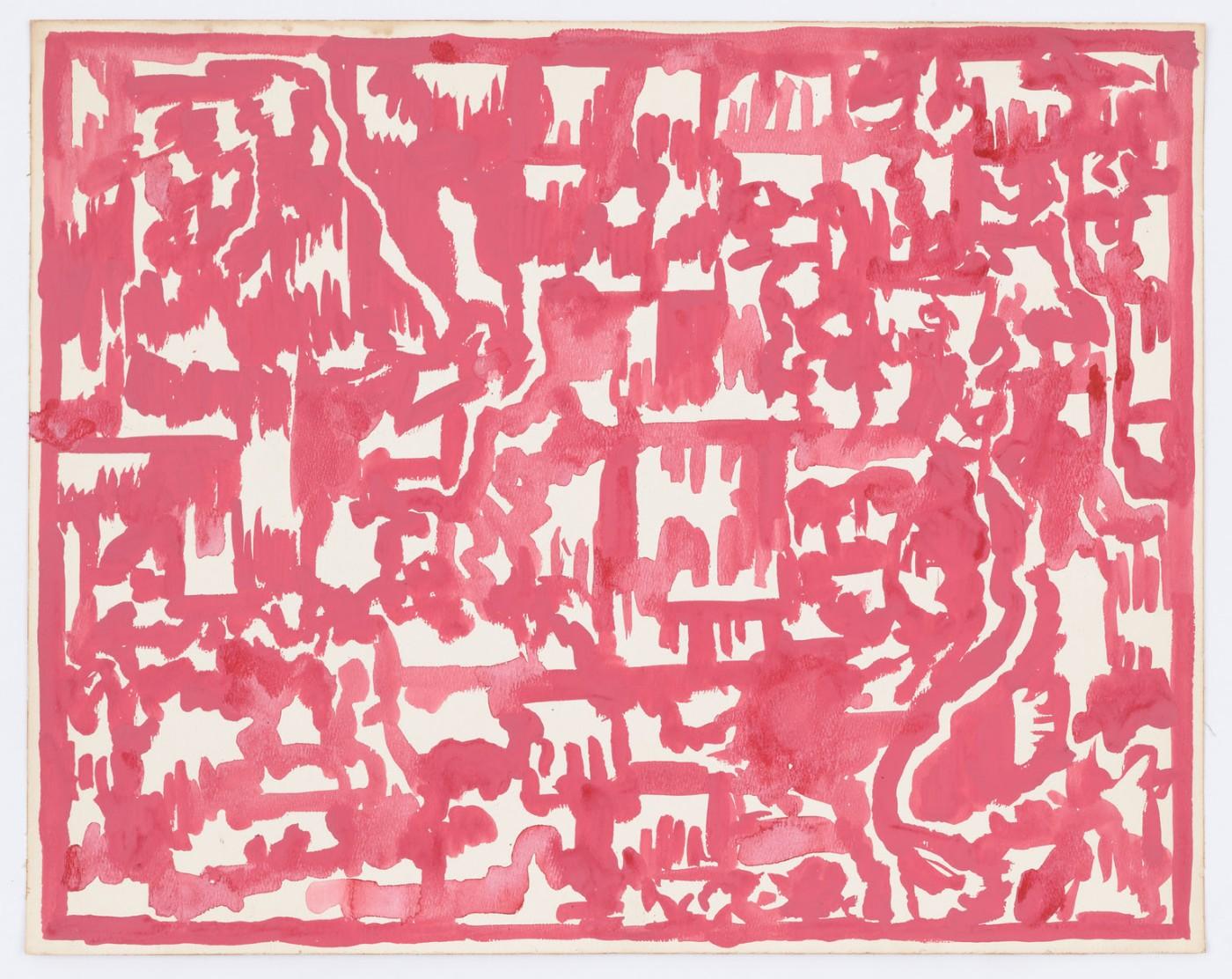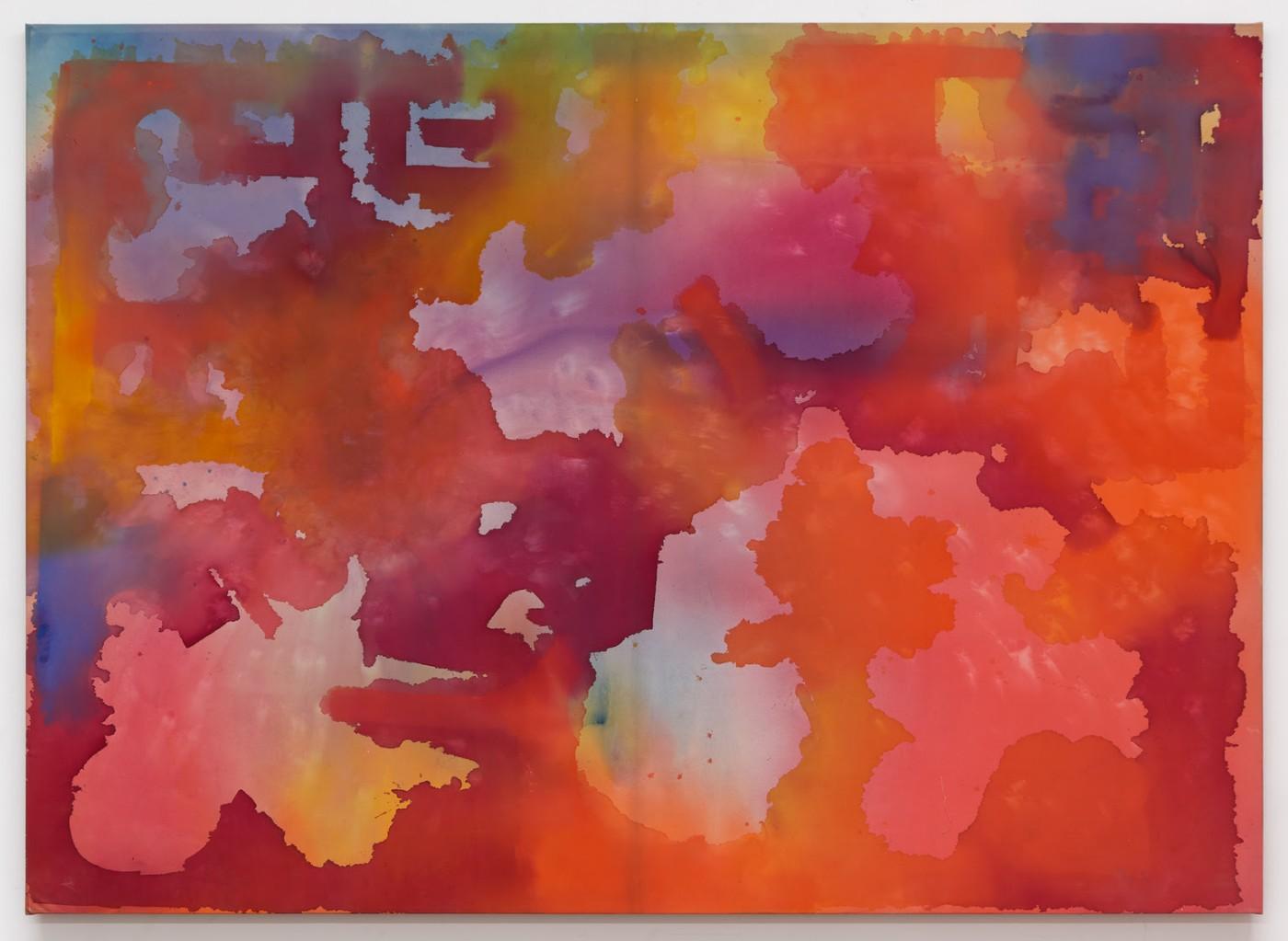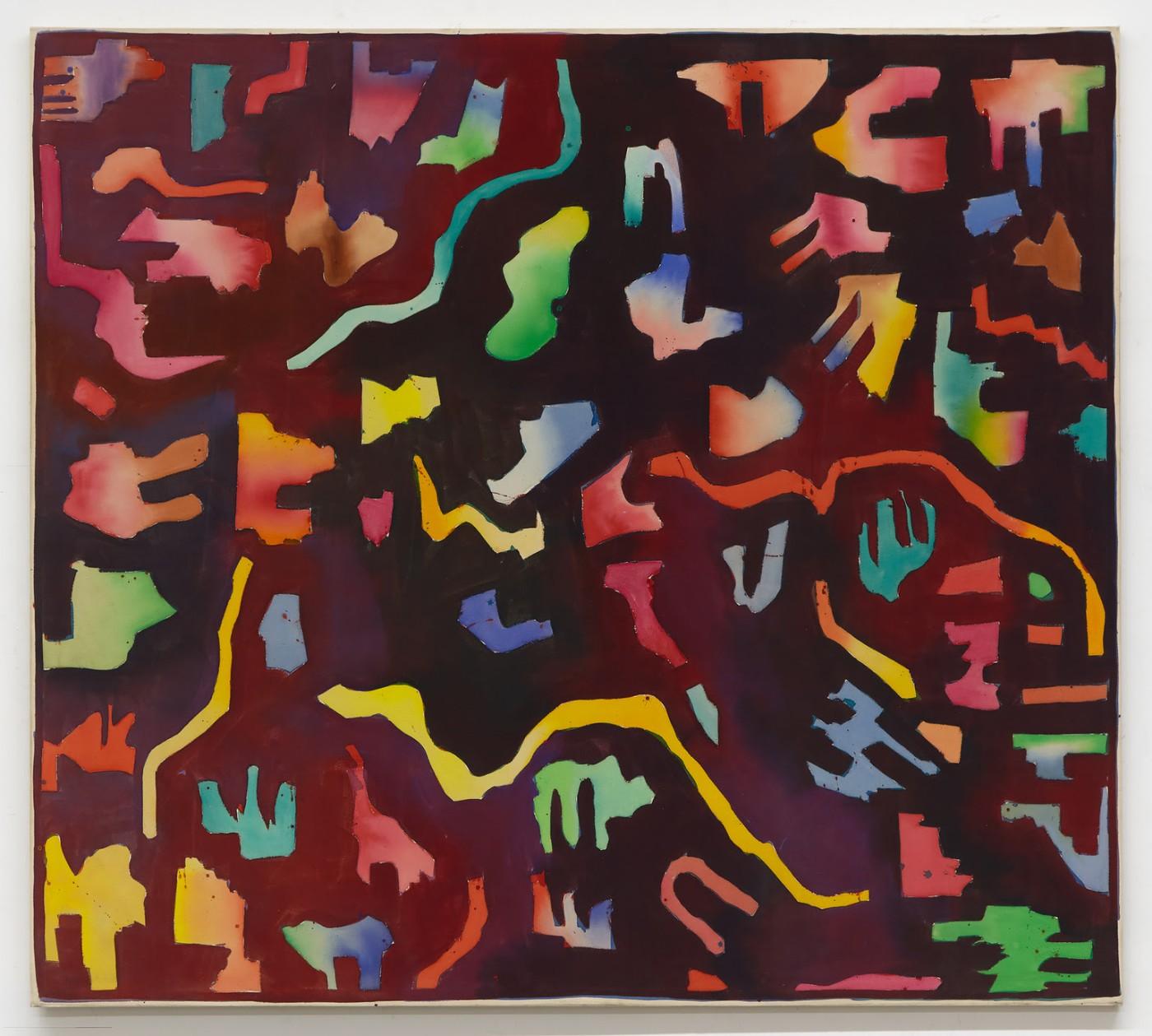Now New York’s Karma Gallery is making the case that Duran deserves a long second look by presenting a dozen of his earliest paintings, dating from 1968-1970. He had already exhibited work by then, but was primarily a sculptor for exhibition’s sake, early on, and it was these intensely colored, monumental paintings that heralded his shift to two-dimensional work. The paintings hang in a pair of connected gallery spaces with long walls and high ceilings. The four dramatic paintings in the first room are shown to their best advantage, one per wall. They range from oversized to monumental. They’re imposing for their size, color, and the almost kinetic play of the shapes spread across the canvases, the smallest of which measures over seven feet long, and the largest at an astonishing 19 feet. There is, in short, no doubting the young Duran’s ambition. Three of the four display his earliest impulses as a painter: the distinct, concrete, almost sculptural forms that left critics in his heyday ambivalent. The fourth is more fluid, the work of a painter ceding a bit of control, forgoing the negative space between forms that’s so prominent in works like Little Red Rooster and edging toward the more fluid style and restrained color palette he came to favor.
A number of more modest pieces hang in the second room, eight watercolors among them. These tend toward discrete color fields on paper. The results can feel almost like experiments in color at times, when regarding the tonal gradations within each field. They’re 19”x24”, and with time exert a gravity of their own, as do the handful of other, almost Abstract Expressionist watercolors, which are more richly colored but less immediately identifiable as Duran’s.




